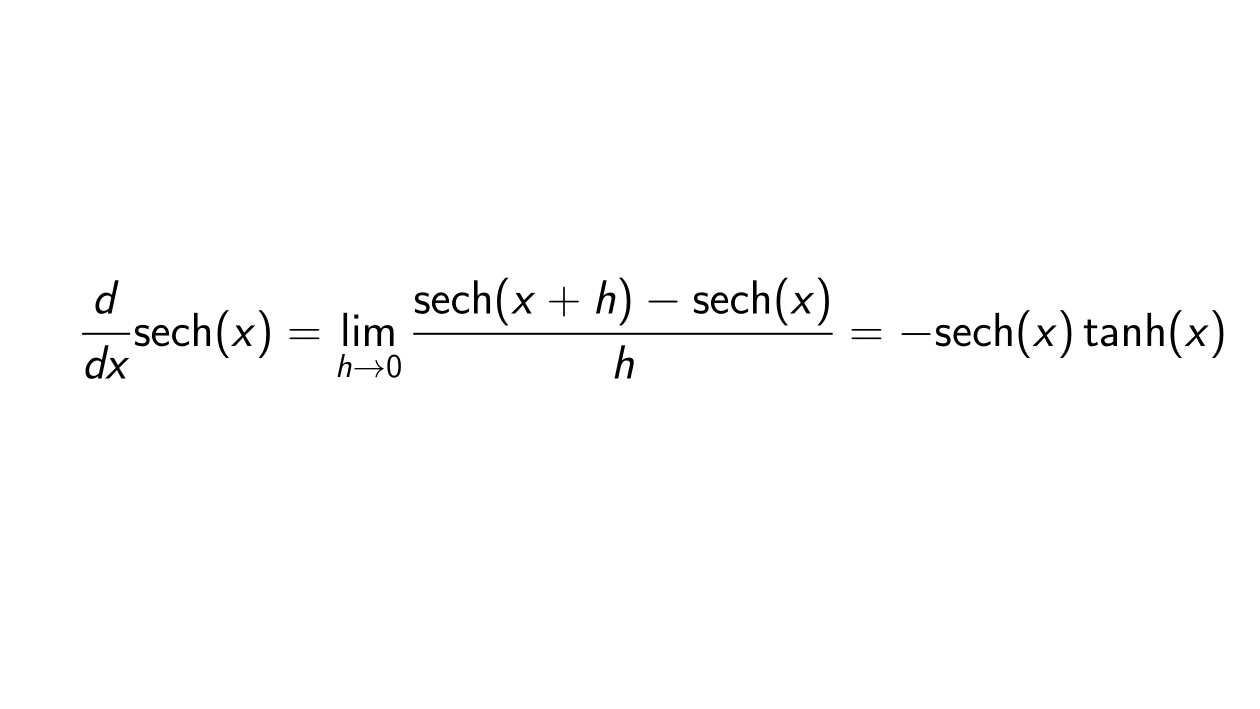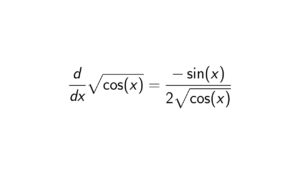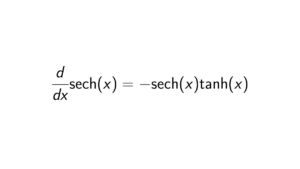Proof. Let f(x) = \text{sech}(x) = \frac{2}{e^x + e^{-x}}. Then using the first principle of derivatives, we get:
\begin{align*}
f'(x) &= \lim_{h \rightarrow 0} \frac{f(x+h) - f(x)}{h} \\
&= \lim_{h \rightarrow 0} \frac{\text{sech}(x + h) - \text{sech}(x)}{h} \\
&= \lim_{h \rightarrow 0} \frac{\frac{2}{e^{x + h} + e^{-x-h}} - \frac{2}{(e^x + e^{-x})(e^{x + h} + e^{-x-h})}}{h} \\
&= \lim_{h \rightarrow 0} \frac{\frac{2(e^x + e^{-x}) - 2(e^{x + h} + e^{-x-h})}{e^{x + h} + e^{-x-h}}}{h} \\
&= 2 \lim_{h \rightarrow 0} \frac{\frac{e^x + e^{-x} - e^{x + h} - e^{-x-h}}{(e^{x + h} + e^{-x-h})(e^x + e^{-x})}}{h} \\
&= 2 \lim_{h \rightarrow 0} \frac{e^x + e^{-x} - e^{x + h} - e^{-x-h}}{h(e^{x + h} + e^{-x-h})(e^x + e^{-x})} \\
&= 2 \lim_{h \rightarrow 0} \frac{e^x(1 - e^{h}) + e^{-x}(1 - e^{-h})}{h(e^{x + h} + e^{-x-h})(e^x + e^{-x})} \\
&= 2 \lim_{h \rightarrow 0} \frac{e^x(1 - e^{h})}{h(e^{x + h} + e^{-x-h})(e^x + e^{-x})} + 2\lim_{h \rightarrow 0} \frac{e^{-x}(1 - e^{-h})}{h(e^{x + h} + e^{-x-h})(e^x + e^{-x})} \\
&= 2e^x\lim_{h \rightarrow 0} \frac{1 - e^{h}}{h(e^{x + h} + e^{-x-h})(e^x + e^{-x})} + 2e^{-x}\lim_{h \rightarrow 0} \frac{1 - e^{-h}}{h(e^{x + h} + e^{-x-h})(e^x + e^{-x})} \\
\end{align*}\begin{align*}
& 2e^x\lim_{h \rightarrow 0} \frac{1 - e^{h}}{h(e^{x + h} + e^{-x-h})(e^x + e^{-x})} = \\
& 2e^x\lim_{h \rightarrow 0} \frac{1 - e^{h}}{h} \cdot \lim_{h \rightarrow 0}\frac{1}{(e^{x + h} + e^{-x-h})(e^x + e^{-x})} = \\
& 2e^x\lim_{h \rightarrow 0} \frac{1 - e^{h}}{h} \cdot \frac{1}{(e^x + e^{-x})^2} = \\
& \frac{2e^x}{(e^x + e^{-x})^2}\lim_{h \rightarrow 0} \frac{1 - e^{h}}{h}.
\end{align*}\begin{align*}
f'(x) = -\frac{2e^x}{(e^x + e^{-x})^2} + 2e^{-x}\lim_{h \rightarrow 0} \frac{1 - e^{-h}}{h(e^{x + h} + e^{-x-h})(e^x + e^{-x})}.
\end{align*}\begin{align*}
& 2e^{-x}\lim_{h \rightarrow 0} \frac{1 - e^{-h}}{h(e^{x + h} + e^{-x-h})(e^x + e^{-x})} = \\
& \frac{2e^{-x}}{(e^x + e^{-x})^2} \lim_{h \rightarrow 0} \frac{1 - e^{-h}}{h}
\end{align*}\begin{align*}
f'(x) &= -\frac{2e^x}{(e^x + e^{-x})^2} + \frac{2e^{-x}}{(e^x + e^{-x})^2} \\
&= -\frac{2(e^x - e^{-x})}{(e^x + e^{-x})^2} \\
&= -\text{sech}(x) \frac{e^x - e^{-x}}{e^x + e^{-x}} \\
&= -\text{sech}(x)\tanh(x).
\end{align*}

